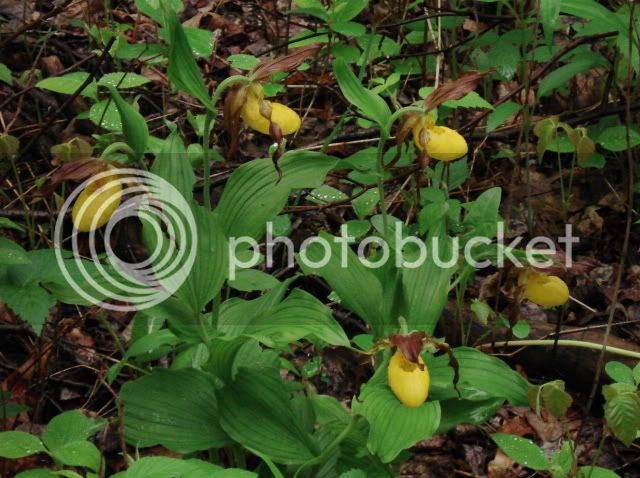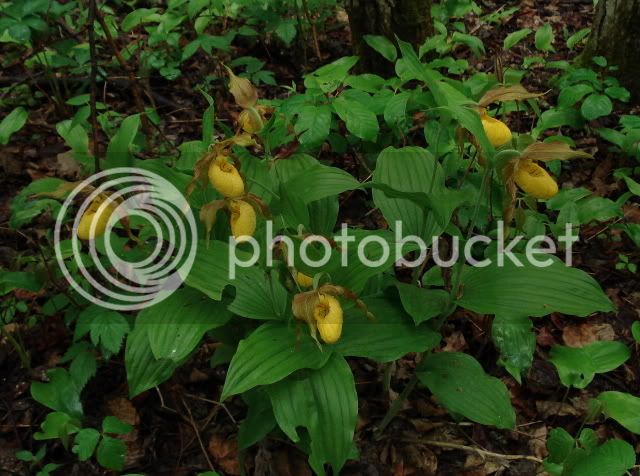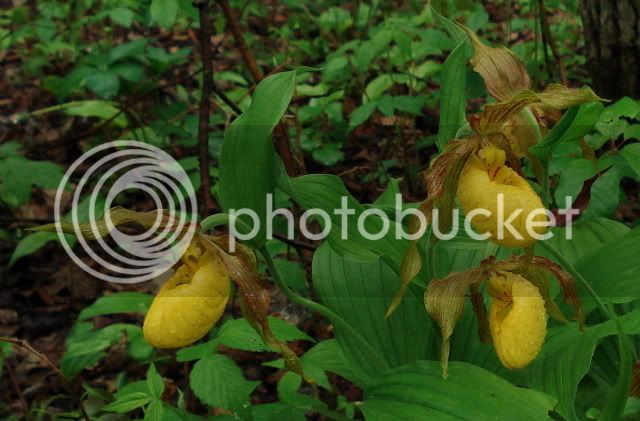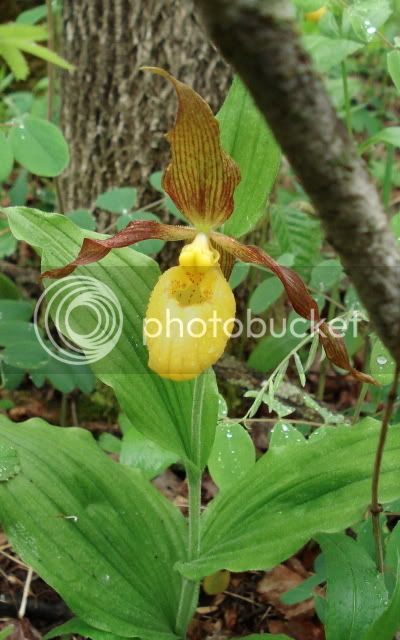Normally, when I think of orchids in the wild, I think of pristine, undisturbed areas. While this may be the case in most instances, orchids are opportunists, just like any other organism. Our neighbor took us out by the old iron mines that were exhausted just after WW II .
This is a picture of the general habitat growing on the overburden from the mine.

Our neighbor has been watching this area for thirty years as nature has reclaimed the area. When he first came out here, he spotted one small clump of yellow lady slippers. Now there are hundreds. I didn't have time to photograph much as we were moving quickly from colony to colony due to rain and pending darkness. I hope to come back and do a better job of photographing this weekend.
Here's a couple of clumps


A couple of closeups


This is a picture of the general habitat growing on the overburden from the mine.

Our neighbor has been watching this area for thirty years as nature has reclaimed the area. When he first came out here, he spotted one small clump of yellow lady slippers. Now there are hundreds. I didn't have time to photograph much as we were moving quickly from colony to colony due to rain and pending darkness. I hope to come back and do a better job of photographing this weekend.
Here's a couple of clumps


A couple of closeups





